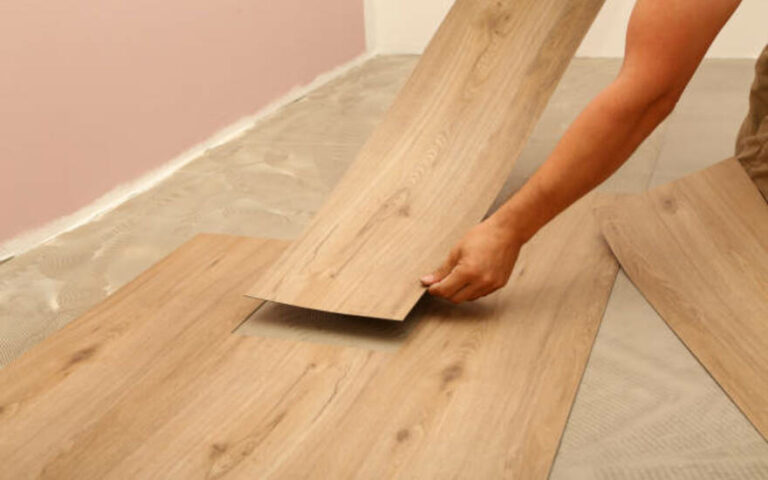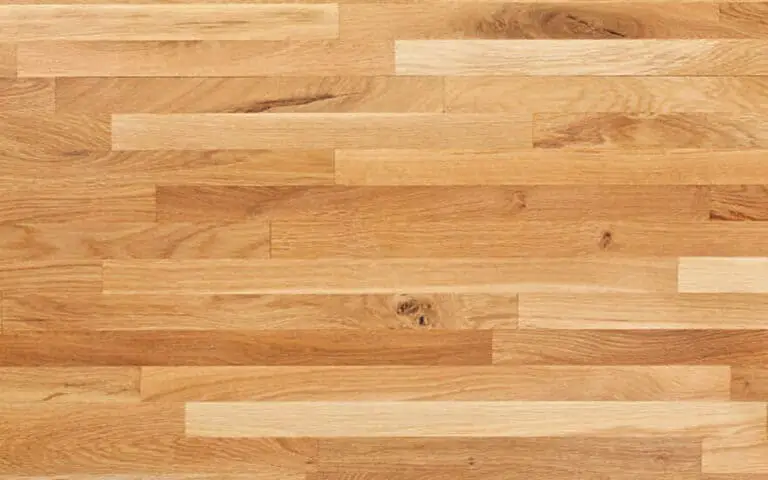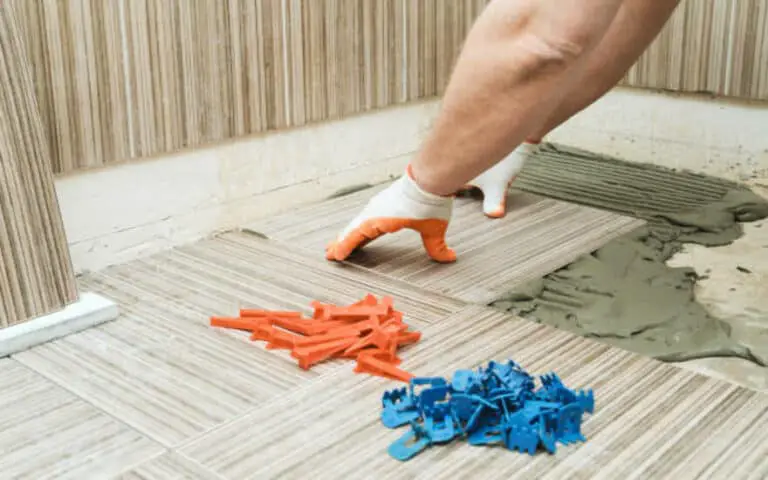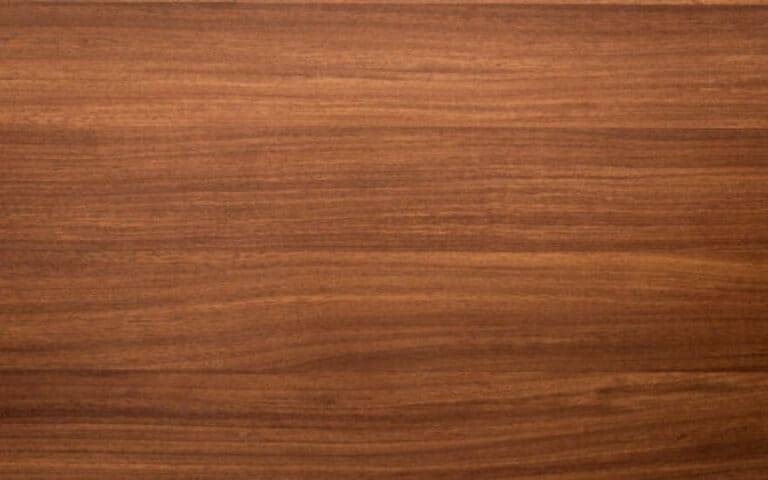Yes, It needs to settle.
This blog post will answer all your questions about laminate flooring and advise on how to ensure that it is properly installed. Read on to learn more!

What is Laminate Flooring?
Laminate flooring comprises several layers of materials fused to form a single plank. The top layer comprises an image layer with photographic images of wood, stone, or ti, le while the bottom layer is a backing layer designed to seal the plank and provide support.
Between two are core layers made of high-density fiberboard that provides stability and moisture resistance. Laminate flooring is an affordable and easy-to-install alternative to solid hardwood or stone floors.
It also requires less maintenance and upkeep than its traditional counterparts, making it perfect for busy households.
5 Reasons: Does Laminate Flooring Need to Settle?
If you’re considering installing laminate flooring in your home, you may wonder if it needs to settle. The short answer is yes! Laminate flooring is a floating floor system, which means it needs time to adjust to its new environment before, during, and after installation.
This process of settling helps ensure that your laminate flooring will last for years.
Here are five reasons why laminate flooring needs to settle:
Reason #1: Laminate Flooring is a Floating Floor
As a homeowner, one of the first things you should understand about laminate flooring is that it is a floating floor.
Instead of directly attaching to the subfloor, the planks are connected and “float” above it. This provides many advantages in terms of installation speed, co, st and ease.
However, it also has issues that must be considered when installing your laminate flooring. One such issue is that it needs time to settle and adjust after installation, which is why allowing time for settling is so important.
Reason #2: Laminate Flooring Can Expand and Contract
Laminate Flooring Can Expand, and contracting is an important factor when installing your laminate flooring. Due to temperature changes, the individual planks will contract and expand.
If there is insufficient space for them to move freely, this can cause buckling and gaps between the planks. To prevent this, it is important to ensure that your laminate flooring is properly acclimatized before installation and that there is adequate space between the planks for expansion.
Additionally, checking loose planks before and after installation is a good idea to ensure the flooring settles properly.
Reason #3: Laminate Flooring Can Move Independently of the Subfloor
Laminate flooring is a floating floor, meaning it is not secured to the subfloor and instead relies on the weight of the planks to maintain its stability.
This means that if any movement in the subfloor, such as expansion or contraction due to changes in temperature or moisture, the planks of laminate flooring will also move with it.
The good news is that this movement is typically minor and won’t affect the overall aesthetic of your flooring. However, it’s important to allow time for the planks to adjust after installation and settle into place to ensure longevity.
Reason #4: Laminate Flooring Needs to Acclimate Before Installation
Before installing laminate flooring, it is essential to acclimate the planks first. This means that the planks should be left in the room where they will be installed for 24-72 hours before installation.
This allows the laminate flooring to adjust to the temperature and humidity of the space, reducing the risk of expansion and contraction that can cause gaps between boards.
Acclimatization also helps ensure a longer-lasting floor by providing a more consistent surface. Taking the time to properly acclimate your laminate flooring is crucial in ensuring a beautiful and durable floor.
Reason #5: Proper Installation is Essential for Longevity
As a homeowner, it’s important to understand the importance of proper installation regarding laminate flooring. While laminate flooring is designed to be a floating floor, it’s still essential to make sure that it’s installed correctly to ensure its longevity.
Poorly installed laminate flooring can cause unevenness and lead to problems such as buckling and warping.
The installation process is not complicated but requires precision and attention to detail if you want your laminate flooring to look great and last for years. So be sure to use the right tools and taimen installing your new laminate flooring!
How Long Does it Take for Laminate Flooring to Settle?
It’s not uncommon for laminate flooring to take some time to settle after installation. While engineered hardwood floors feel solid immediately, laminate floors may take a few months to settle fully.
It’s important to understand that this is a normal process and can be affected by the environment where the flooring is installed. On average laminate, floor laminate floor it can take anywhere from three to four months to properly settle.
To ensure your floor settles properly, it’s important to acclimate the planks before installation and leave room for expansion and contraction when installing. Additionally, monitoring the humidity of your space and checking for any loose planks before and after installation can help ensure that your laminate flooring will settle correctly.
4 Tips for Ensuring Proper Settling of Laminate Flooring
Proper setting is essential for a beautiful and long-lasting finish regarding laminate flooring. To ensure your laminate flooring settles correctly, there are a few tips to keep in mind. First, make sure you check the humidity of your space before beginning installation.
You want the humidity to be between 35% and 65% for optimal settling. Second, check for any loose planks before installation; this will help prevent any bumps or unevenness after the flooring is laid down.
Third, give it time to adjust to the environment once the flooring is installed. This can take anywhere from 24 hours to a few days, depending on the temperature and humidity levels in the space. Finally, allow the planks him settle naturally into place once it has adjusted. With these tips in mind, your laminate floor should settle correctly for many years of beauty and durability.
1. Check the humidity of your space
Before you begin the installation process, it’s important to check the humidity of your space. Manufacturers recommend installing your laminate flooring in no more than 60% humidity and no less than 30%, so it’s best to aim for a middle range.
This will help to prevent improper acclimation and movement of the planks due to shifts in temperature or moisture levels. Additionally, too much moisture can cause damage to the flooring, such as warping or buckling, so be sure to keep an eye on the humidity levels in the room and take preventive measures if necessary.
2. Check for loose planks before installation
Before installation, it is important to check for loose planks. If you find any planks that are not properly connected, it is best to replace them before installation. Loose planks can cause gaps and cracks in the flooring, leading to an uneven surface.
Additionally, loose planks can lead to the flooring becoming unleveled over time due to the movement of the planks. Taking the time to check for loose planks before installation will save you a lot of time and money in the long run.
3. Allow time for the planks to adjust after installation
After the laminate planks have been in the room for a few days, it is time to adjust them. This is an important step to ensure that the flooring will lay properly and that there are no gaps or buckling. To do this, take each plank and place it in its final position, ensuring it is level with the other planks. If any edges don’t line up correctly, you can use a mallet to gently tap them into place. Once your planks are adjusted and in place, you can move on to the next step.
4. Allow time for the planks to settle after installation
Once your laminate flooring is installed, it’s important to give it some time to settle. This is especially true for floating floors, as the planks will need to adjust to the temperature and humidity levels in the room. Suppose you don’t give them time to settle. In that case, you could end up dealing with unevenness in your flooring later onWaitit at least 72 hours after installation to ensure proper settling n before putting furniture or other items on the floor. This will give the planks ample time to adjust and lay flat against each other.
What Causes Unevenness in Laminate Flooring?
I’ve been researching what causes unevenness in laminate flooring, and there are a few reasons why it can happen.
The most common cause is movement and warping of the subfloor, which can clump sumps and bumps. Various factors,s such as moisture, humidity, or temperature changes, can cause thises.
If the laminate planks are not properly installed, they can move independently of the subfloor, creating gaps and resulting in an uneven surface. Additionally, if the planks are not allowed to properly acclimate before installation, they won’t be able to expand and Contract as needed resulting in an uneven surface.
Lastly, poor installation techniques can lead to unevenness in your laminate flooring. To ensure proper settling of your laminate flooring, it is important to check for loose planks before installation, allow time for the planks to adjust after installation, on and allow time for them to settle after installation.
Summary
In summary, it is important to understand that laminate flooring needs to settle before it can be installed properly. This is because of the floating nature of the flooring and how it can expand and Contract.
Additionally, proper installation is essential for the longevity of the flooring, so it’s important to take your time and do it right. To ensure proper settling of your laminate flooring, you should check the humidity of your space, check for loose planks before installation, allow time for the planks to adjust after installation and allow time for the planks to settle after installation.
Lastly, unevenness in laminate flooring can be caused by poor subfloor preparation or insufficient acclimation time. All in all, these steps will help ensure that your laminate flooring lasts many years.






